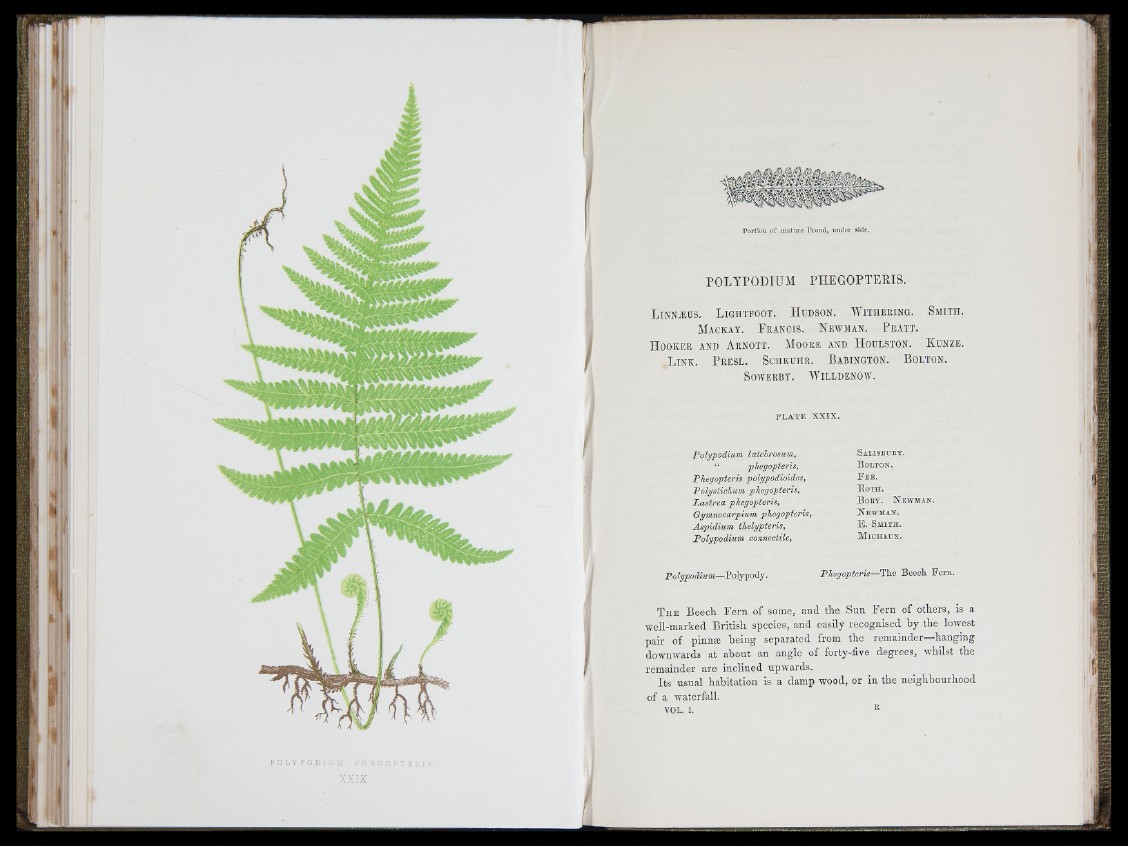
!
II
m
p o L Y p o D i ; M k Y .s : , O P 'I L v. . • ,
X X IX
P o r tio n o f m a tu r e F i-o n d , u n d e r s id e .
POLYPODIUM PHEGOPTERIS.
L in n æ ü s . L ig h t f o o t . H u d s o n . AVi t h e r in g . S m i t h .
M a c k a y . F r a n c is . N e itm a n . P r a t t .
H o o k e r a n d A r n o t t . M o o r e a n d H o u l s t o n . K ü n z e .
L i n k . P r e s l . S c h k ü h r . B a b in g t o n . B o l t o n .
SOWERBY. AYi LLDENOMV
P L A T E X X IX .
Polypodium laiehrosum,
“ phegopteris,
Polystichum phegopteris,
L a strea phegopteris,
Gymnocarpium phegopteris,
A sp id ium thelypteris,
P o lypodium conneciile,
Polypodium— S o fp o à y .
S a l is b u e t .
B o i t o n .
F e e .
B o t h .
B o r y . N e w m a n .
N e w m a n .
E . S m i t h .
M ic h a u x .
Phegopteris—The Beech F e rn .
T h e Beech F e rn of some, and the Sun F e rn of others, is a
well-marked British species, and easily recognised h y the lowest
pair of pinnæ being separated from the remainder—hanging
downwards at about an angle of forty-five degrees, whilst the
remainder are inclined upwards.
Its usual habitation is a damp wood, or in the neighbourhood
of a waterfall.
VOL. I. K